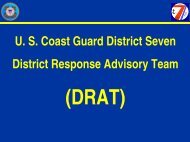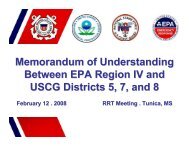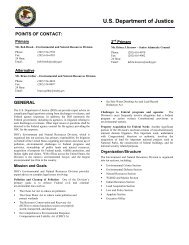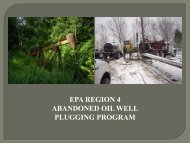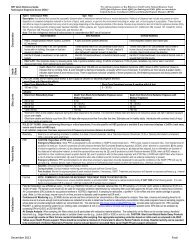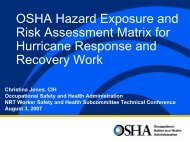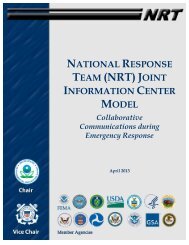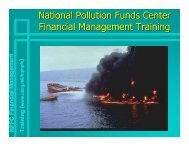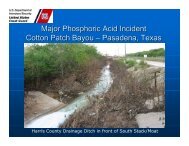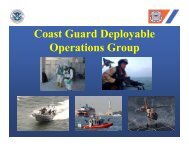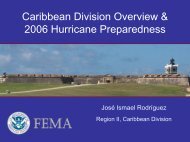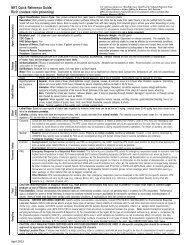USE OF DISPERSANTS - U.S. National Response Team (NRT)
USE OF DISPERSANTS - U.S. National Response Team (NRT)
USE OF DISPERSANTS - U.S. National Response Team (NRT)
- No tags were found...
Create successful ePaper yourself
Turn your PDF publications into a flip-book with our unique Google optimized e-Paper software.
DISPERSANT <strong>USE</strong> DECISION / IMPLEMENTATIONELEMENT CHECKLISTNote: Need all "YES" answers before dispersant use is acceptable.YES NODECISION ELEMENT1. Is the spill/oil dispersible?Oil is generally dispersible if: API Gravity is more than 17Pour Point is less than 10 F (5.5 C) belowambient temperatureViscosity is less than 10,000 centistokesNote: Some modern dispersants may be formulated to be effective on a wider range of oilproperties. The choices of dispersants listed on the NCP’s <strong>National</strong> Product Scheduleare limited. To answer this question you should look at which dispersant would the mosteffective given the type of oil.YES NO2. Have environmental tradeoffs of dispersant use indicated that use shouldbe considered ?Note: This is one of the more difficult questions. Dispersant toxicity assessment informationfound in Appendix IV of the CRRT pre-approval agreement may assist in this decision.YES NO3. Is the chosen dispersant likely to be effective?Consider:* effectiveness of dispersant application to the oil;* dispersant-to-oil application ratio;* oil slick thickness;* distribution of oil slick on the water;* droplet size distribution in aerial spray;* oil viscosity;* energy input;* suspended particles in water (sedimentation);* weathering of oil;* emulsification of oil;* oil composition;* dispersant composition;* water salinity; and* temperature.* dispersant type compatible with application meansNote: A preliminary effectiveness test such as the standard flask swirling method is highlyrecommended.



